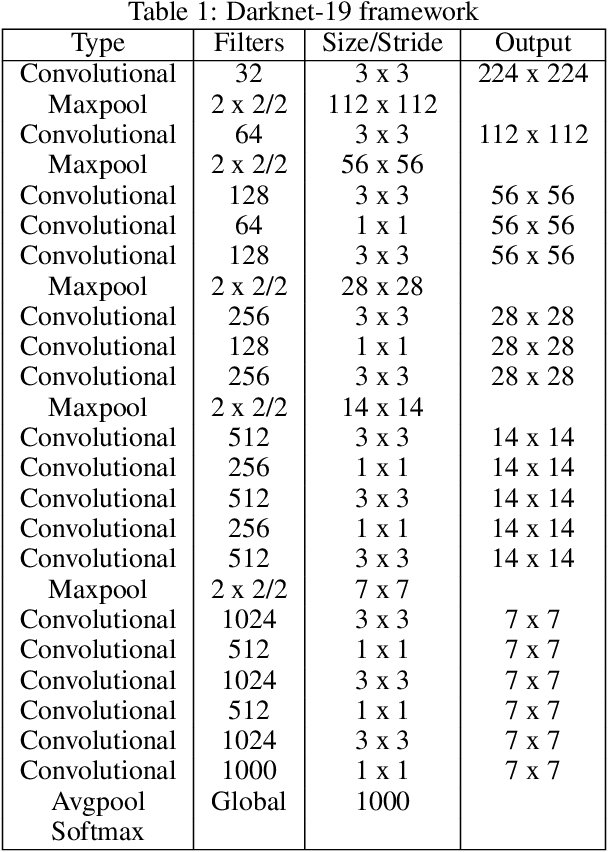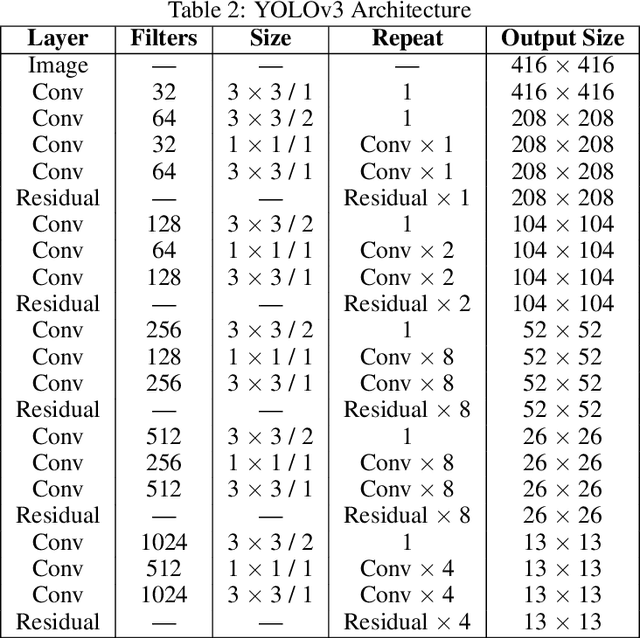Mujadded Al Rabbani Alif
YOLOv12: A Breakdown of the Key Architectural Features
Feb 20, 2025Abstract:This paper presents an architectural analysis of YOLOv12, a significant advancement in single-stage, real-time object detection building upon the strengths of its predecessors while introducing key improvements. The model incorporates an optimised backbone (R-ELAN), 7x7 separable convolutions, and FlashAttention-driven area-based attention, improving feature extraction, enhanced efficiency, and robust detections. With multiple model variants, similar to its predecessors, YOLOv12 offers scalable solutions for both latency-sensitive and high-accuracy applications. Experimental results manifest consistent gains in mean average precision (mAP) and inference speed, making YOLOv12 a compelling choice for applications in autonomous systems, security, and real-time analytics. By achieving an optimal balance between computational efficiency and performance, YOLOv12 sets a new benchmark for real-time computer vision, facilitating deployment across diverse hardware platforms, from edge devices to high-performance clusters.
YOLOv11 for Vehicle Detection: Advancements, Performance, and Applications in Intelligent Transportation Systems
Oct 30, 2024



Abstract:Accurate vehicle detection is essential for the development of intelligent transportation systems, autonomous driving, and traffic monitoring. This paper presents a detailed analysis of YOLO11, the latest advancement in the YOLO series of deep learning models, focusing exclusively on vehicle detection tasks. Building upon the success of its predecessors, YOLO11 introduces architectural improvements designed to enhance detection speed, accuracy, and robustness in complex environments. Using a comprehensive dataset comprising multiple vehicle types-cars, trucks, buses, motorcycles, and bicycles we evaluate YOLO11's performance using metrics such as precision, recall, F1 score, and mean average precision (mAP). Our findings demonstrate that YOLO11 surpasses previous versions (YOLOv8 and YOLOv10) in detecting smaller and more occluded vehicles while maintaining a competitive inference time, making it well-suited for real-time applications. Comparative analysis shows significant improvements in the detection of complex vehicle geometries, further contributing to the development of efficient and scalable vehicle detection systems. This research highlights YOLO11's potential to enhance autonomous vehicle performance and traffic monitoring systems, offering insights for future developments in the field.
Enhancing Diabetic Retinopathy Diagnosis: A Lightweight CNN Architecture for Efficient Exudate Detection in Retinal Fundus Images
Aug 13, 2024



Abstract:Retinal fundus imaging plays an essential role in diagnosing various stages of diabetic retinopathy, where exudates are critical markers of early disease onset. Prompt detection of these exudates is pivotal for enabling optometrists to arrest or significantly decelerate the disease progression. This paper introduces a novel, lightweight convolutional neural network architecture tailored for automated exudate detection, designed to identify these markers efficiently and accurately. To address the challenge of limited training data, we have incorporated domain-specific data augmentations to enhance the model's generalizability. Furthermore, we applied a suite of regularization techniques within our custom architecture to boost diagnostic accuracy while optimizing computational efficiency. Remarkably, this streamlined model contains only 4.73 million parameters a reduction of nearly 60% compared to the standard ResNet-18 model, which has 11.69 million parameters. Despite its reduced complexity, our model achieves an impressive F1 score of 90%, demonstrating its efficacy in the early detection of diabetic retinopathy through fundus imaging.
YOLOv1 to YOLOv10: A comprehensive review of YOLO variants and their application in the agricultural domain
Jun 14, 2024



Abstract:This survey investigates the transformative potential of various YOLO variants, from YOLOv1 to the state-of-the-art YOLOv10, in the context of agricultural advancements. The primary objective is to elucidate how these cutting-edge object detection models can re-energise and optimize diverse aspects of agriculture, ranging from crop monitoring to livestock management. It aims to achieve key objectives, including the identification of contemporary challenges in agriculture, a detailed assessment of YOLO's incremental advancements, and an exploration of its specific applications in agriculture. This is one of the first surveys to include the latest YOLOv10, offering a fresh perspective on its implications for precision farming and sustainable agricultural practices in the era of Artificial Intelligence and automation. Further, the survey undertakes a critical analysis of YOLO's performance, synthesizes existing research, and projects future trends. By scrutinizing the unique capabilities packed in YOLO variants and their real-world applications, this survey provides valuable insights into the evolving relationship between YOLO variants and agriculture. The findings contribute towards a nuanced understanding of the potential for precision farming and sustainable agricultural practices, marking a significant step forward in the integration of advanced object detection technologies within the agricultural sector.
 Add to Chrome
Add to Chrome Add to Firefox
Add to Firefox Add to Edge
Add to Edge